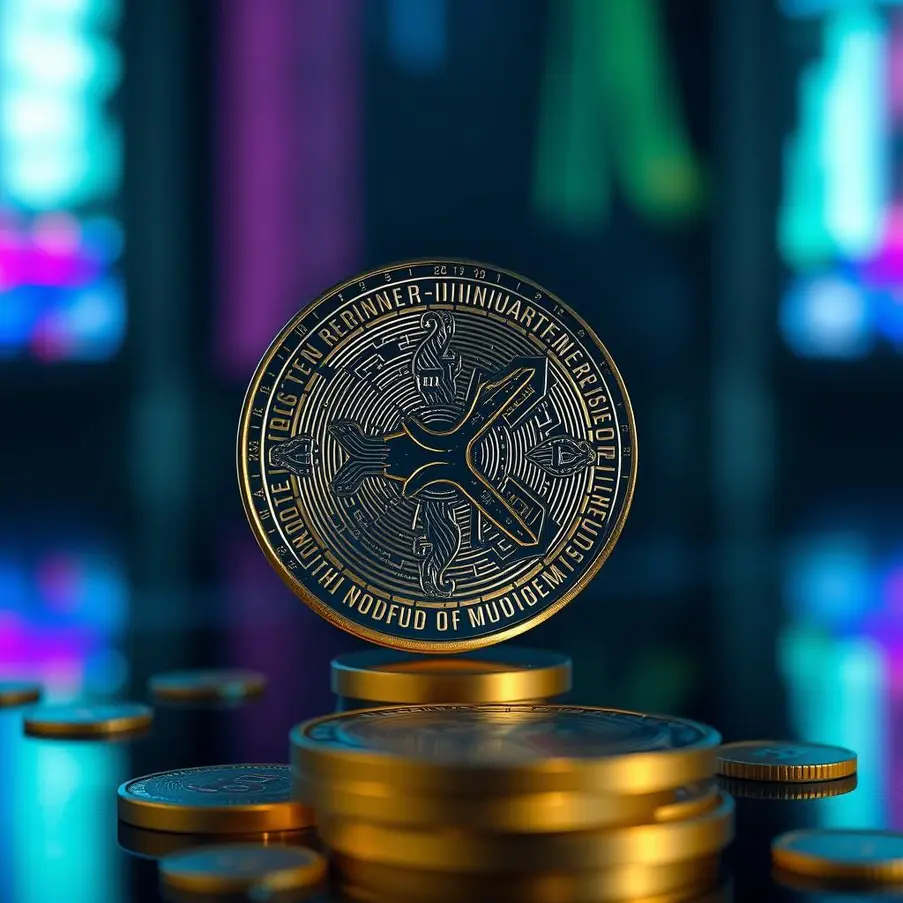Ripple (XRP), one of the notable cryptocurrencies, has gained significant attention from both investors and technologists. As the digital currency landscape evolves, Ripple is often in the spotlight due to its unique consensus algorithm and its aim to facilitate cross-border payments efficiently. However, understanding whether Ripple is at its peak or has the potential for further growth involves examining its past performance, current market conditions, and future projections. By delving deeper into these aspects, we can uncover whether now is the opportune moment for Ripple to shine or if it holds untapped potential for the future. Let us explore the dynamics of Ripple’s market positioning, its technological innovations, and its prospects to provide a comprehensive overview of its current status.
Ripple’s Journey: A Historical Perspective
Ripple (XRP) embarked on its ambitious journey in 2012, introducing a novel solution to the cumbersome process of cross-border payments. Founded by Chris Larsen and Jed McCaleb, Ripple sought to revolutionize international money transfers by providing instantaneous and cost-effective settlements. Unlike other major cryptocurrencies such as Bitcoin and Ethereum, Ripple isn’t primarily a medium for transactions; instead, it is an efficient mechanism for liquidity between currencies.
Ripple’s emergence coincided with the rapid evolution of blockchain technology. It carved out a niche amidst the digital asset boom by focusing on collaboration with traditional financial institutions. This positioning was both strategic and pioneering. XRP’s unique consensus mechanism, which eschews mining, further distinguished it from other cryptocurrencies, allowing for faster transaction processing times.
Several key moments defined Ripple’s trajectory. One such moment was securing partnerships with major banks, which validated its potential to disrupt traditional banking norms. Furthermore, its legal battles, particularly with the U.S. Securities and Exchange Commission, have been pivotal, influencing market perception and regulatory clarity within the crypto space.
Ripple’s journey showcases how it rose amongst its peers despite challenges and criticisms. It has consistently set itself apart by championing collaboration over competition, particularly in the banking sector. For more insights into how Ripple’s innovations stand out amidst evolving ecosystems, delve into the Solana Ecosystem Guide.
Ripple’s distinct approach to solving real-world problems has ensured its resilience in a volatile market. Its focus on practical, scalable solutions for cross-border payments cements its place as a unique player in the cryptosphere. As the cryptocurrency landscape evolves, Ripple’s ability to adapt and refine its offerings remains a critical factor in sustaining its market position.
Understanding Ripple’s Technological Edge
Ripple’s technological framework is distinct within the cryptocurrency ecosystem, primarily due to its consensus algorithm and transaction processing capabilities. At the heart of Ripple’s value proposition is its proprietary consensus algorithm, which differs significantly from traditional Proof of Work or Proof of Stake models. It operates on a unique protocol that aims to achieve consensus among validating servers to confirm transactions rapidly and accurately.
This technology underpins Ripple’s competitive advantage in terms of speed. Transactions on the Ripple network are processed in mere seconds, a stark contrast to the prolonged confirmation times witnessed in other blockchain systems. This swift transaction process becomes particularly advantageous in the context of global financial systems where timing is crucial.
Cost-effectiveness is another cornerstone of Ripple’s technological edge. The network’s design minimizes the need for computational power, significantly reducing transaction fees. This cost efficiency not only benefits users with lower transactions costs but also positions Ripple favorably for widespread adoption in cross-border payment scenarios.
Efficiency is compounded by Ripple’s ability to handle a high volume of transactions simultaneously, promoting seamless scalability. Unlike many blockchain architectures that struggle under heavy loads, Ripple maintains its performance integrity, which is crucial for any cryptocurrency aspiring to be a central player in facilitating international transactions.
However, to claim that Ripple is at its peak would require ongoing assessment of its adaptability to emerging blockchain challenges and shifts in regulatory landscapes. While its innovative technologies provide a strong platform, continuous enhancements are necessary to maintain its edge. Ripple’s potential is significant, but it will depend on its ability to innovate and address any emerging gaps. For more insights into cryptocurrency dynamics, consider exploring Ethereum and Solana’s evolving landscape.
Market Performance: Past and Present
Ripple (XRP) has experienced a dynamic journey in the cryptocurrency market. Historically, its price and market capitalization have witnessed significant fluctuations, often influenced by regulatory developments, strategic partnerships, and market sentiment. In its early years, Ripple’s unique consensus mechanism and partnerships with financial institutions fueled excitement, propelling its market performance. Investor interest peaked, driving the price and market capitalization upwards, particularly during the 2017 crypto boom.
In recent years, Ripple faced regulatory challenges, notably the SEC lawsuit in the United States, which cast doubt on its future and impacted its market standing. Despite these hurdles, Ripple maintained strong fundamentals and continued to build its network of partnerships, particularly in cross-border payments. These partnerships have been pivotal in sustaining investor interest and boosting confidence in XRP’s potential use cases.
Analyzing current trends, Ripple exhibits resilience amid market volatility. The resurgence in price and market cap can be attributed to successful regional expansions and institutional adoption. Additionally, the growing mainstream acceptance of cryptocurrencies plays a crucial role in bolstering XRP’s market position.
While some analysts argue that Ripple is nearing its peak, others see potential for further growth. The optimistic sentiment is driven by Ripple’s ongoing innovation and robust partnerships. However, cautious investors may point to regulatory uncertainties and stiff competition as barriers to sustained growth.
Identifying patterns in Ripple’s market performance necessitates a balanced view. Historical data highlights periods of high volatility interspersed with steady growth. These patterns suggest that while Ripple may not be at its absolute peak, its trajectory depends on evolving market conditions and strategic maneuvers. For those interested in exploring how portfolio diversification can mitigate risks associated with such volatile assets, this article provides valuable insights.
Future Potential and Prospects
With an ever-evolving financial landscape, Ripple (XRP) is expected to play a critical role. It is setting the stage for potential advancements through strategic partnerships. By collaborating with financial institutions globally, Ripple seeks to enhance cross-border transactions and offer innovative solutions.
Regulatory dynamics are a crucial influence on Ripple’s future. As regulatory landscapes mature, clearer frameworks may benefit Ripple by providing legitimacy and fostering trust among stakeholders. Countries working towards crypto-friendly regulations may help XRP in gaining a competitive advantage in digital payments.
Experts predict varied scenarios where Ripple could capitalize on its unique technology. Some suggest that advancements in decentralized finance (DeFi) might elevate Ripple’s utility as a bridge between traditional finance and blockchain. By embedding DeFi principles, Ripple could enable seamless interoperability across various financial systems.
Furthermore, Ripple may leverage emerging technologies such as artificial intelligence and machine learning to optimize transaction efficiency. These technologies can enhance data security and fraud detection, thus reinforcing Ripple’s position in the financial ecosystem. Amid these developments, Ripple’s commitment towards sustainability can drive long-term growth. With energy-efficient consensus models, XRP could attract environmentally-conscious investors and businesses.
Ripple’s prospects are bolstered by embracing financial trends like the growing demand for digital currencies. This interest could increase adoption and integration of XRP in digital wallets and payment platforms, as noted in a guide to sustainable investing.
In conclusion, as Ripple navigates through these advancements and external influences, its position could be either sustained or elevated, depending on its adaptability and strategic focus. Aligning with industry trends and technological advancements will be key to Ripple’s future success.
Comparative Analysis: Ripple vs. Other Cryptocurrencies
When analyzing Ripple, Bitcoin, and Ethereum, their distinct features highlight specific advantages and limitations in the cryptocurrency landscape. Scalability is a critical aspect where Ripple excels. Its consensus ledger algorithm allows for incredibly fast transaction speeds, settling thousands of transactions per second. In contrast, Bitcoin’s Proof-of-Work network caps at around 7 transactions per second, while Ethereum processes slightly more but still faces congestion issues.
In terms of use case versatility, Bitcoin primarily serves as a digital store of value, often referred to as digital gold. Ethereum offers a broader ecosystem with its smart contract functionality, fostering innovations in decentralized finance (DeFi) and non-fungible tokens (NFTs). Ripple focuses on cross-border payments, aiming to revolutionize the traditional banking system with cost-effective and swift transactions. However, its specialization in financial sector applications limits its versatility compared to Ethereum’s expansive decentralized applications (dApps) network.
Network adoption is another dimension where Ripple shows promise but also faces hurdles. While Ripple has secured partnerships with numerous financial institutions, boosting its legitimacy, it struggles with regulatory scrutiny, particularly in the United States. Bitcoin enjoys widespread acceptance and recognition, bolstered by its first-mover advantage and status as a pioneering cryptocurrency. Ethereum’s thriving developer community continually enhances its platform, driving robust adoption.
Ripple stands strong in rapid transaction processing and banking sector integration, which positions it as a leader in financial technology solutions. However, it needs to improve regulatory clarity and broaden its application scope beyond banking to enhance its market competitiveness. Discover more about digital finance tools that could impact the future of cryptocurrency use cases.
Final words
Ripple’s current status reflects both its accomplishments and areas of potential growth. Whether it is indeed at its peak or positions itself for more innovation depends on various factors, including market dynamics, technological evolution, and regulatory developments. As Ripple continues to influence the financial landscape, it’s important for investors and enthusiasts to stay informed on its journey. I encourage you to explore more articles that delve into the exciting world of cryptocurrencies and financial technology, uncovering the intricacies and opportunities that lie within.
Have you been concerned about your health? Visit our partner
Learn more: https://pleasureinhealth.com/
About us
Pleasure in Health offers insightful health guides and products to enhance your well-being. Connect with us to explore holistic health solutions tailored for you.


